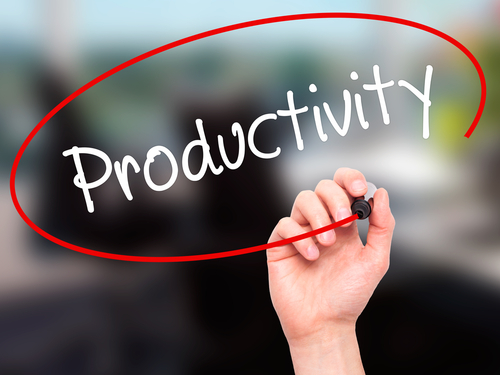The tools most people use in order to keep themselves productive day by day are a calendar that schedules appointments and events and a (never-ending) to-do list that reminds them to do all the necessary things they have to finish in the rest of their time available.
The problem with this system is that it makes other people’s needs a priority while lets our most important deliverables unstructured. The set points of our time we manage during the week are the ones that we spend with others on meetings and discussions. We know exactly when to show up, how much time we would spend with these people and what points we would discuss with them.
Opposed to that, when we work independently we just sit down for hours with a list trying to force ourselves to get more done and feeling frustrated at the end of the day because our to-dos didn’t get any shorter. We have no idea how much time we spent on a particular task or when we got distracted and why. We might try to multitask (which undermines your focus) or leave projects in half and finish none of them by the end of the day.
What if we could block time for „meetings” with ourselves just like we do with others? Why should we not organize our agenda as well as a tight conference day and gain a better clarity about what takes up the most time in our days?
You can also optimize your calendar by following this simple 5 step formula.
Step 1: Break down each item on your to-do list
The first mistake we often make is that we stuff our to-do lists with task-groups instead of single tasks. Just like you cannot eat a cluster of grape at once but only pick the berries one by one, you can only do a single task at a time.
Let’s say your to-do list says Write a business article for X magazine. It sounds so overwhelming in the first place that you rather invent ways to procrastinate than getting it done immediately. However, if your list says:
Write a business article for X magazine:
- Define the focus of the article and divide it into 5 sections
- Research about the topic and make notes
- Write the raw article
- Proof-read and edit
- Send it/Publish it
This sounds much more doable, right? It takes a different brain activity to read, proofread or write something so this way you won’t get confused and you can get things done faster without any tension. It gives you a better clarity about how much work does it actually take up and you can focus on a single activity at once.
Step 2: Predict a timeframe for each item on the list
Even if you don’t have a routine of this particular deliverable, it will now be easier to assign a timeframe for each of these points. Write it down one by one, no matter if it is 60 minutes or 5 minutes.
Step 3: Add breaks
A very important thing we often forget is that we cannot focus and be productive for hours in a row. Ideally we need to take a short break every hour and stop working, even if it’s just 10 minutes while we stretch and take a few deep breaths.
When you are in a task block, focus only on your work: no checking mails and messages, no Youtube videos, no walks to the canteen. Then during your break block, you can do anything you’d like! Make sure you include a longer time-off every few hours.
Step 4: Add them to your calendar
This might look a bit too complex at first if you use a desktop calendar. In order not to spend too much time on this, you can add bigger time blocks into your e-calendar and detail it out on paper or combine the two in any other way that makes you feel comfortable.
You can still move things around easily if a client meeting comes up during the day, because you will know exactly how much time you need to finish your priorities. Yet, this way you will feel as devoted to your daily tasks as to your appointments with others.
Step 5: Measure and optimize
You might find after Day One of following this method that your time-blocks were not exactly sufficient to finish what you planned or you had to take some items off the list. That’s completely okay as long as you pay attention to what made you run out of time.
Maybe you have to break your tasks down even more to the very basics. Maybe you have to structure your breaks differently in order to keep yourself focused. Perhaps, you just need more time to finish certain tasks and you are faster with other ones or you have to change the order of your time-blocks in order to add variety into your day. All of these will give you precise information about your personal time management and will help you perform better in the future.
I hope this simple technique will help you become more efficient and more motivated in your work so that you can finish each day feeling accomplished and ready for the next one!


Recent Comments